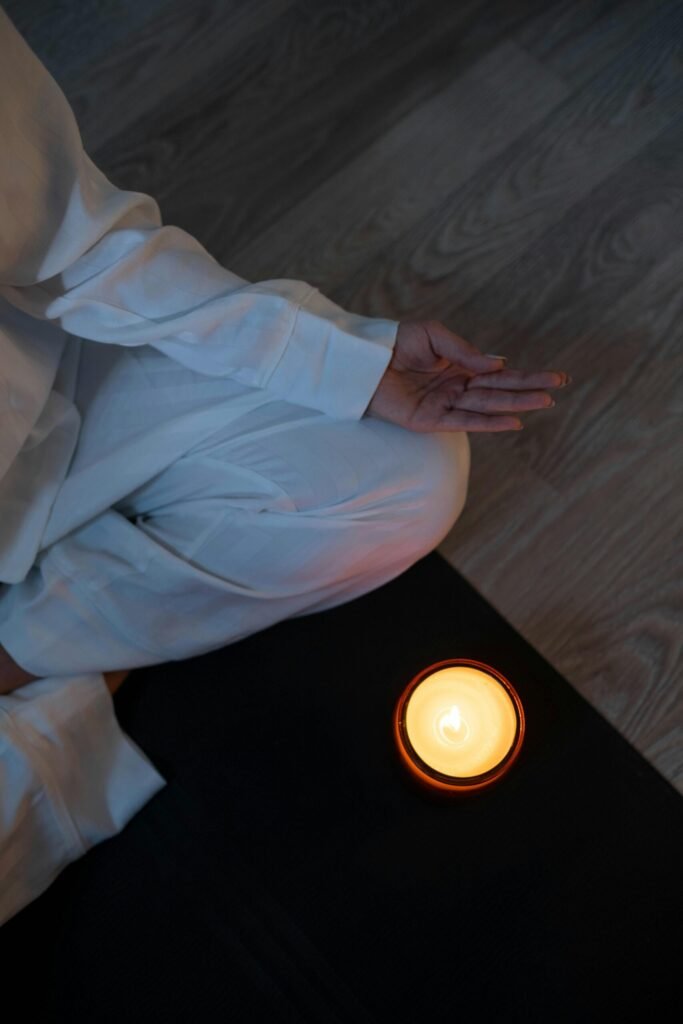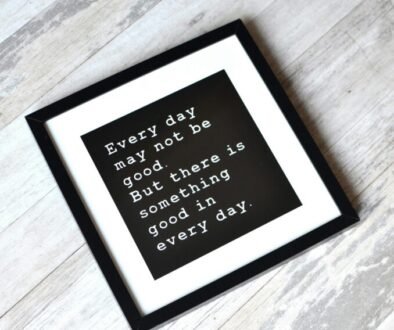What Is Mindful Living: A Beginner’s Guide to Daily Mindfulness
What is mindful living?
At its core, mindful living is about intentionally being present in your daily life—fully experiencing each moment with clarity, awareness, and acceptance. In a world that constantly pulls our attention in multiple directions, embracing mindfulness can be a transformative practice that brings more peace, purpose, and fulfillment into your everyday experiences.
For women seeking a balanced, refined elevated lifestyle, mindful living offers a pathway to connect more deeply with oneself, nurture emotional well-being, and navigate life with grace and clarity. This comprehensive guide will walk you through the foundational principles of mindful living, its benefits, and actionable tips on how to start mindful living in your daily routine.
Understanding Mindful Living
What Does It Mean to Live Mindfully?

- To live mindfully means to pay attention to your thoughts, feelings, bodily sensations, and surrounding environment in the present moment, without judgment. It involves observing life as it unfolds, rather than getting lost in regrets about the past or anxieties about the future.
- Mindful living is cultivating awareness, curiosity, and kindness toward yourself and others. Which empowers you to make conscious choices that align with your values, leading to a more intentional and fulfilling life.it doesn’t really mean controlling your thoughts or achieving a particular state of perfection. Instead,
The Core Principles of Mindful Living
Mindfulness is deeply rooted in ancient contemplative practices, especially within Buddhism, but its principles are universal and secular in nature. The following principles serve as the foundation for a mindful lifestyle:
1. Presence: Living in the now. Being fully aware of your current thoughts, feelings, and actions.
2. Acceptance: Acknowledging your experiences without judgment or resistance.
3. Non-Attachment: Letting go of the need to cling to specific outcomes or identities.
4. Compassion: Practicing kindness toward yourself and others.
5. Intention: Making conscious choices that reflect your values and priorities.
Understanding these principles is essential to discovering how to start mindful living and sustaining it as a lifestyle.
The Benefits of Mindful Living

Incorporating mindfulness into your daily life can bring profound physical, mental, and emotional benefits. Here’s a closer look at the most impactful outcomes:
1. Reduced Stress and Anxiety
Mindful living helps you respond rather than react to stress. By staying grounded in the present, you can reduce unnecessary worry and create space for calm and clarity.here is how you can cultivate peace and calmness
2. Improved Emotional Regulation
When you live mindfully, you’re more aware of your emotions and how they influence your behavior. This awareness can help you manage emotional responses with greater ease and resilience.
Increases self-compassion and reduces negative self-talk.
3. Enhanced Focus and Productivity
Present-moment awareness enhances your concentration and helps you focus on one task at a time, which can increase both the quality and efficiency of your work.we all want to see good results where we put effort but this effort has to be concentrated to give you excellent results where mindfulness plays a big part .
4. Better Physical Health
Mindfulness has been linked to improved sleep, lowered blood pressure, stronger immunity, and healthier habits, such as mindful eating and regular physical activity.
5. Deeper Relationships
By being fully present with others, you foster deeper connections, more empathetic communication, and building stronger empowering relationships.
These are just a few of the many benefits of mindful living. Over time, these benefits compound to create a more balanced, joyful, and meaningful life.
How to Start Mindful Living: A Step-by-Step Guide

If you’re wondering how to start mindful living, the key is to begin with small, intentional changes that build over time. Below are practical, beginner-friendly steps to help you integrate mindfulness into your everyday life.
Step 1: Start with Breath Awareness
Breathing is the foundation of mindfulness. Take a few minutes each day to focus solely on your breath. Inhale slowly through your nose, exhale gently through your mouth, and notice the rhythm of your breath. When your mind wanders (and it will), gently bring your attention back to your breathing.
Tip: Set a timer for 3 to 5 minutes each morning as your daily breath awareness practice.
Step 2: Create a Morning Mindfulness Ritual
Start your day with a calm and centered routine. This could include light stretching, journaling, sipping tea mindfully, or reading an inspirational quote. Avoid jumping straight into emails or social media.
Tip: Keep your phone on airplane mode for the first 30 minutes after waking to create space for intentional living.
Step 3: Practice Mindful Eating
Eating mindfully means savoring each bite, chewing slowly, and fully engaging your senses. This practice not only improves digestion but also deepens your appreciation for food.
Tip: Try eating one meal per day without distractions (no TV, phone, or multitasking).
Step 4: Be Present in Everyday Tasks
Whether you’re washing dishes, folding laundry, or walking the dog, bring your full attention to the task at hand. Notice the sensations, movements, and sounds involved.
Tip: Choose one routine activity each day to do mindfully and reflect on how it makes you feel.
Step 5: Reflect and Journal
Journaling is a powerful tool for self-awareness. Reflect on your experiences, thoughts, and feelings without editing or judgment. Ask yourself questions like, “What am I feeling right now?” or “What did I learn today?”
Tip: Use prompts such as “Today, I felt most present when…” to guide your entries.
Step 6: Practice Gratitude
Mindful living includes recognizing the abundance in your life. Write down three things you’re grateful for each day. This simple act can shift your focus from lack to appreciation.
Step 7: Limit Distractions
In our digital age, distraction is a major barrier to mindfulness. Create tech-free zones or hours in your day where you disconnect from screens and reconnect with yourself or loved ones.
Tip: Use the “Do Not Disturb” feature on your phone during meals, creative work, or relaxation.
Step 8: End the Day Mindfully
Create a wind-down routine that helps you reflect and relax. This might include reading, meditation, gentle stretching, or listening to soothing music. Reflect on what went well and what you’re looking forward to tomorrow.
Tools and Resources for a Mindful Life
Meditation Apps:
• Headspace: Great for beginners with guided meditations.
• Insight Timer: Offers thousands of free meditations.
• Calm: Focuses on relaxation, sleep, and mental clarity.
Mindful Living Books:
• “Wherever You Go, There You Are” by Jon Kabat-Zinn
This modern classic introduces mindfulness in simple, practical terms. Jon Kabat-Zinn, founder of the Mindfulness-Based Stress Reduction (MBSR) program, emphasizes the importance of being present without overcomplicating the practice. The book’s short chapters make it an accessible and gentle entry point for beginners exploring what mindful living really means.
• “The Miracle of Mindfulness” by Thich Nhat Hanh
Written by the renowned Vietnamese Zen master, this book serves as a loving guide to incorporating mindfulness into everyday activities—from washing dishes to eating a meal. Thich Nhat Hanh’s teachings are deeply spiritual yet practical, emphasizing presence, compassion, and peace in every moment.
• “The Power of Now” by Eckhart Tolle
This transformative book dives into the concept of living in the present moment as the key to enlightenment and freedom from suffering. Tolle explores ego, identity, and spiritual consciousness, offering deep insights into how to live mindfully and connect with your true self beyond thought.
Podcasts:
• The Mindful Kind by Rachael Kable
This podcast offers bite-sized, relatable mindfulness episodes that are perfect for beginners. Rachael shares personal stories, mindset tips, and simple techniques for building calm and clarity into daily life.
• On Being with Krista Tippett
While broader in scope, this award-winning podcast often delves into themes like intentional living, spirituality, and the human experience. Krista interviews thought leaders and visionaries whose ideas gently guide listeners toward more mindful, meaningful living.
• The Calm Collective
Host Cassandra Eldridge explores life’s deeper topics—grief, creativity, simplicity, and presence—through the lens of mindfulness. Her gentle tone and introspective conversations create a peaceful space for listeners to slow down and reflect.
Common Myths About Mindful Living
“I don’t have time.”
Mindfulness doesn’t require hours of meditation. Even 30 seconds of deep breathing can ground you.
“It’s only for spiritual or religious people.”
Mindfulness is a secular practice available to anyone, regardless of background or beliefs.
“I have to be calm all the time.”
Mindful living isn’t about suppressing emotions; it’s about being aware of them and responding with compassion.
Final Thoughts
What is mindful living? It is a way of life that invites you to slow down, become more aware, and live with intention. By embracing daily mindfulness practices, you begin to experience more presence, peace, and purpose in everything you do.
Whether you’re just beginning or rediscovering your path, now is the perfect time to embrace this transformative journey. Start small. Be patient. And trust that every mindful moment is a step toward a more meaningful, beautiful life.
You don’t have to change everything at once. Just begin with one breath, one pause, one act of awareness.



